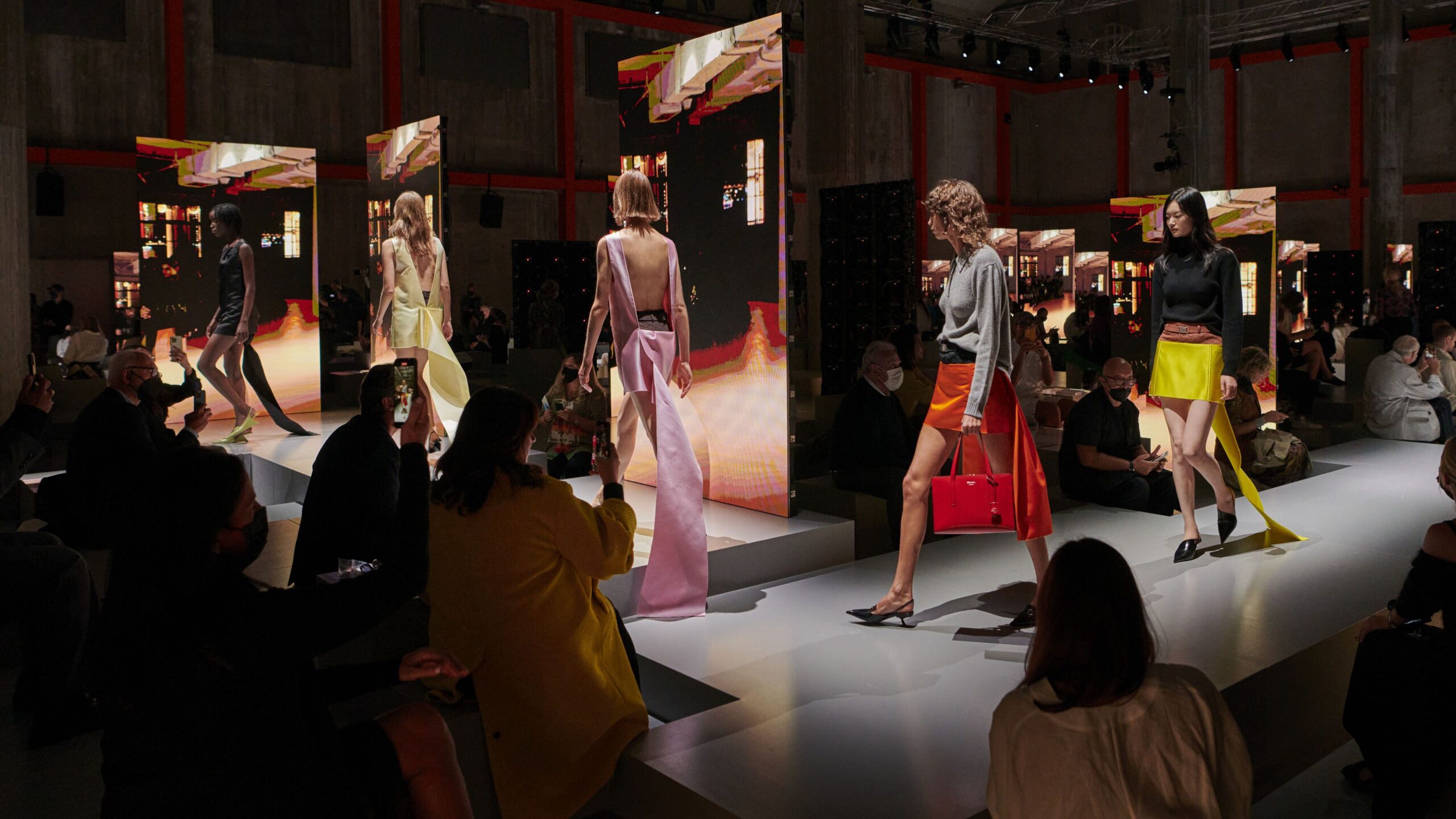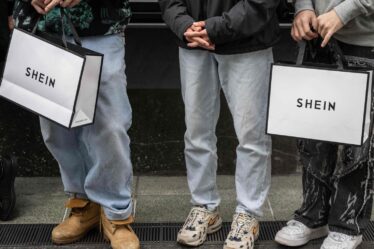
On a Roll
- Prada reports financial results for 2021 on Monday, and executives will speak to analysts
- In January, the company said sales rose 41 percent to $3.8 billion last year, and were up 8 percent from 2019
- Prada has pulled back from wholesale, which will help margins as sales climb
Prada needs only two or three years like the last one to reach its goal of $5 billion in annual sales. The group, which also includes Miu Miu and Church’s, already released its 2021 sales in January, two months earlier than scheduled. It was a show of strength for a company that is riding high. Sales are up from 2019, and Prada ranked third in Lyst’s most recent index of fashion’s hottest brands, its best showing to date. Sister label Miu Miu has been in the news nonstop for its now-ubiquitous micro-mini skirts.
As with most big luxury brands, there’s a world of difference between what’s driving the hype on the runway and magazine covers and what’s driving sales. Miu Miu skirts are impossible to avoid on TikTok and are selling out in stores, but it’s Prada handbags and pumps – sold in brand-owned stores at full price – that will get the company to $5 billion (leather goods and footwear made up nearly three-quarters of Prada Group’s sales in the first half of 2021, though apparel’s share is rising). So will expansion in categories such as jewellery and beauty, where a long-gestating partnership with L’Oréal is finally materialising, starting with the launch of men’s fragrance Luna Rossa Ocean last fall.
The Bottom Line: Prada could use Monday’s call with analysts to outline its pricing strategy for 2022. The brand has reined in discounting in recent years, but has yet to join Chanel, Louis Vuitton and other rivals in aggressively raising prices on leather goods.
The Geopolitics of Fast Fashion
- H&M-owner Hennes & Mauritz and Zara-parent Inditex report quarterly results this week
- H&M’s sales in China have fallen sharply since a boycott last year after the company expressed concern about forced Uighur labour
- Both companies temporarily pulled out of Russia earlier this month, closing hundreds of stores
Fast fashion brands try to be everywhere and everything to everyone, which typically means staying out of politics. That’s gotten harder in recent years. Last spring, H&M was one of several Western apparel brands targeted for a boycott in China after expressing concerns about the use of forced Uighur labour in harvesting cotton from the Xinjiang region. As of the fourth quarter, sales were still down about 40 percent in the country. In Russia, H&M and rival Zara joined other brands in closing stores and halting e-commerce after the country’s invasion of Ukraine. Uniqlo-parent Fast Retailing’s experience this past week has silenced any doubts as to whether it was still possible to remain aloof from politics. The company’s chief executive initially argued that the brand’s Russian stores should remain open, calling clothing a “necessity.” Fast Retailing was quickly forced to backtrack amid global consumer outrage.
The Bottom Line: Russia and China amount to about 9 percent of H&M’s sales combined, and Russia contributed about 8.5 percent of Inditex’s EBIT. Both companies are treating their geopolitical issues as temporary, but at some point may need to look elsewhere to make up lost revenue.
Off-Piste Holdouts
- Alexander McQueen shows its Fall/Winter 2022 collection in New York on March 15
- Jacquemus, Willy Chavarria and Ralph Lauren all opted to show off calendar as well
- Most big luxury brands returned to showing in Paris and Milan as concerns about the pandemic receded
Despite the return of brands like Gucci and Bottega Veneta to the schedule this past fashion month, not every brand has come back into the fold. Each holdout has its own motivations. Jacquemus was never wedded to the schedule to begin with, and lush show locations are now a brand staple — this past week, he used an Oahu beach as a catwalk. Ralph Lauren, like Marc Jacobs, doesn’t need New York Fashion Week to pull focus. Willy Chavarria, when asked about the timing of his upcoming show, told BoF: “It is not as important for us to show during the fashion week calendar. For us, it’s about when we feel like the collection will have the highest impact. This timing has to do with many factors, but at the root it is a feeling, an instinct, an urge.” That leaves McQueen. Unlike its Kering stablemates, McQueen is continuing with its pandemic-era approach with a show in London last fall and now, New York.
The Bottom Line: A trip to the US makes sense commercially for McQueen: the brand is on fire, and North America, along with Asia, is driving sales growth, Kering CFO Jean-Marc Duplaix said last month.
The Week Ahead wants to hear from you! Send tips, suggestions, complaints and compliments to [email protected].
Join BoF Professional to get access to the exclusive insight and analysis that keeps you ahead of the competition. Subscribe to BoF Professional here.


